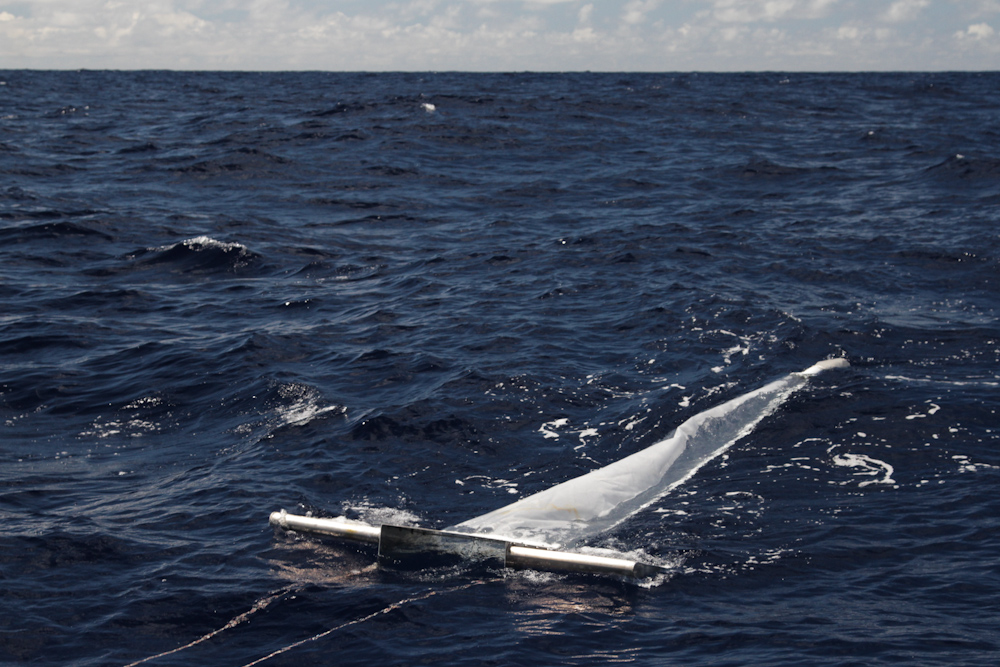Plastic in fish, birds, air, water and . . . us
After seeing some sea water sampled from the middle of Earth’s oceans by Tim Silverwood I asked Tim to let me have some notes for my blog and here they are. I was sickened at the thought of fish, birds and ourselves getting plastic in our lungs, blood, organs and much of what we depend upon to live.
Until I spoke to Tim and saw his samples and research I had no idea how widespread and un-removeable plastic is from Earth’s air, water and soils.
What a ‘piece of work is man . . . ‘, I thought, remembering Shakespeare’s homage to man as I read and took the following extract from a paper Tim sent me:
“Can you describe The Great North Pacific Garbage Patch, and raising awareness with your sailing trip from Hawaii to Vancouver?
The Great Pacific Garbage Patch has long been recognised as resembling a floating ‘island’ of trash in the North Pacific Ocean. This is very untrue. As I stated earlier, most plastic items break up over time in the ocean so what we are finding in these ‘garbage patches’ is mostly tiny pieces of plastic that doesn’t just float on the surface, it also descends down into the water column. It is more akin to think of these patches of gigantic plastic soups. I spent three weeks in July 2011 sailing 5000km from Hawaii to Vancouver to document and research the Great Pacific Garbage Patch with a team of scientists, activists and film makers from around the world. It was frightening to see the impact the debris was having on Hawaii before I had even left on the boat. As Hawaii sits in the middle of the North Pacific Gyre it receives a daily dose of trash from the sea, it is literally deposited like a relentless conveyor belt on the windward facing beaches on every tide, swell and storm. For a full account of my voyage read this ABC Science Online story: www.abc.net… Or you can also check out my TEDx talk from 2011 here: www.youtube.com…
How extensive is the area of rubbish, is it mainly plastic?
The Great Pacific Garbage Patch is huge. It is the central accumulation zone of a much larger network of currents known as the North Pacific Subtropical Gyre. This Gyre stretches over an area twice the size of Australia. Unfortunately the North Pacific Gyre is not unique, there are five major Oceanic Gyres in the major oceans of the world and all contain high concentrations of plastic. It is very apt to say that plastic exists in every square mile of ocean and is present on every beach in the world from Antarctica to the Arctic.
How is this affecting us?
Marine debris costs us a lot of money through the impact it has on shipping, fishing, tourism and costs of cleaning it up. In the Asia Pacific region APEC estimates marine debris costs over $1 billion per year. Over 265 species of marine wildlife are directly impacted by marine debris through ingestion (eating plastic) and entanglement (getting caught in it). Rough estimates suggest over a million seabirds may die each year and up to 100, 000 marine mammals and turtles. If the impact on our back pockets and on precious marine life isn’t enough we now know that many species that form the basis of the human food chain are eating this plastic soup. From the plankton at the bottom of the food chain right through to the top pelagic predators that we love to eat like tuna, plastic is being discovered in these creatures. We might eat a fish that has eaten a dozen other fish and as each of those specimens breaks down in the stomach of the bigger fish it releases those toxins from the plastic into the fatty tissue of the next trophic level. The bioaccumulation of toxins through the ocean food chain is just starting to be fully understood. If it goes the way science is suggesting then our reliance on the ocean as our key source of global protein may be in jeopardy. It isn’t hard to look at the increases we are seeing in human health conditions like ADHD, autism, diabetes, cancer, gender neutrality etc and see that they perfectly correlate with the immense increase our generation is having to exposure to synthetic chemicals that were never around 60 years ago. I feel like we are a test tube generation being exposed to thousands of chemicals that we don’t know anything about.
What was the most peculiar thing you saw in the plastic soup?
When we were around 2000km from Hawaii we pulled up our scientific trawl and discovered a toy plastic gorilla, the kind you might find in a kids take-away meal. He was extremely weathered and disorientated. In the same trawl was a toothbrush, two pen caps, a spray can nozzle, dozens of tiny plastic pieces and some plastic resin pellets called nurdles. Nurdles are the building block of plastics and are being discovered on beaches all around the world showing there is a major flaw in the supply chain of plastic pellets. Nurdles perfectly resemble fish eggs and are notoriously good absorbers of persistent organic pollutants (POP’s) making them toxic pills for any animals that inadvertently consume them.
Can the plastic soup ever be cleaned-up?
In my opinion no. The fact that it is a soup and that it doesn’t just float on the surface makes it physically impossible to think about ‘scooping’ it up. Within the soup lives all the organic life that we rely on for survival; the phytoplankton that give us half of the oxygen that we breathe, the zooplankton that form the base of the food chain. We must instead focus our energy on stopping this plastic from getting there at the source. I feel we can on occasions clean up some items from the ocean like abandoned fishing nets and rope (known as ghost nets) as these items will keep on fishing for hundreds of years if left in the sea. They are particularly hazardous to endangered species like sea turtles and monk seals as well as whales and dolphins. We could also develop some techniques for targeting bigger items in the sea when they are know to accumulate together. For example we are learning now of up to 18 million tonnes of debris heading towards Hawaii and North America as a result of the Japanese tsunami, surely there is a way we can collect large items from the sea immediately following events like this. It makes you also think about the levels of debris that enter the ocean after flood events like the recent Bangkok floods as well as the 2011 Brisbane floods.
You are motivating people to collect three pieces of rubbish they find on the beach with Take 3, an initiative you co-founded. Do you believe people are actually doing it?
Not only are new Take 3 recruits joining every day but we are also getting lots of praise from people out there that have been taking 3 for decades. Many people who love the beach automatically feel inclined to reach down and scoop up some trash off the shoreline on their morning walk, dog run or dash from the surf. Our main objective is to instil in the broader community the satisfaction that can come from doing such a simple gesture. The beauty of Take 3 is that you can do it anywhere, anytime and it won’t cost you time or money. We feel like we have national and global appeal because no matter where you are you CAN make a difference by picking up some rubbish. Every river leads to the sea and the ocean is downhill from everywhere so it doesn’t matter whether you live in Bourke, Broome or Brisbane – that rubbish you collect and put in the bin will no longer get washed away by the next storm and possibly end up in the ocean. Our goal is to change the image of trash on the ground from inert and ‘someone else’s problem’ to a threat to wildlife and something that you CAN pick up even though you didn’t put it there.
If prevention is the best cure, what else can people be doing besides picking rubbish off the beach?
We need a complete culture shift away from our dependence on single use disposable plastic items. We need to start realising that plastic is way too precious to be using in items that are used for a fraction of time and then discarded. My passion for embracing reusable products led to me starting a business called ReChusable (www.rechusable.com…) with my supportive mother that aims to provide sustainable alternatives to disposable plastic.
More often than not our plastic packaging, wrapping and containers are not even recyclable. We are fed the idea that it’s ok to consume and consume and consume because when you’re done you just put the item in your little yellow bin and it just goes ‘away’. You might believe that ‘away’ is a happy place where old items get a fancy new makeover and return as new items but it’s just not the case. Recycling requires a large input of energy to ship, sort and reprocess materials and many plastic items aren’t actually recycled into the same items again as we’re led to believe. They may often be down-cycled into other materials like the filling for your sofa or a new t-shirt but they are not then able to be feasibly recycled again. Glass and paper/ cardboard can theoretically be recycled over and over again in a closed loop but the vast majority of plastics that we use cannot. It is my vision to start unveiling the curtain on consumption and waste and show the world that at current levels IT IS NOT OK! We need to be made aware of the situation with the goods we choose to consume and encourage people to make better solutions. A great way to get your eyes open is to watch the Story of Stuff series by Annie Leonard. Annie has developed a great range of short films that everyone can digest and take away from: www.storyofstuff.com…“
If China can stop using plastic bags why not us?
Thanks, Tim – keep going,
Michael



